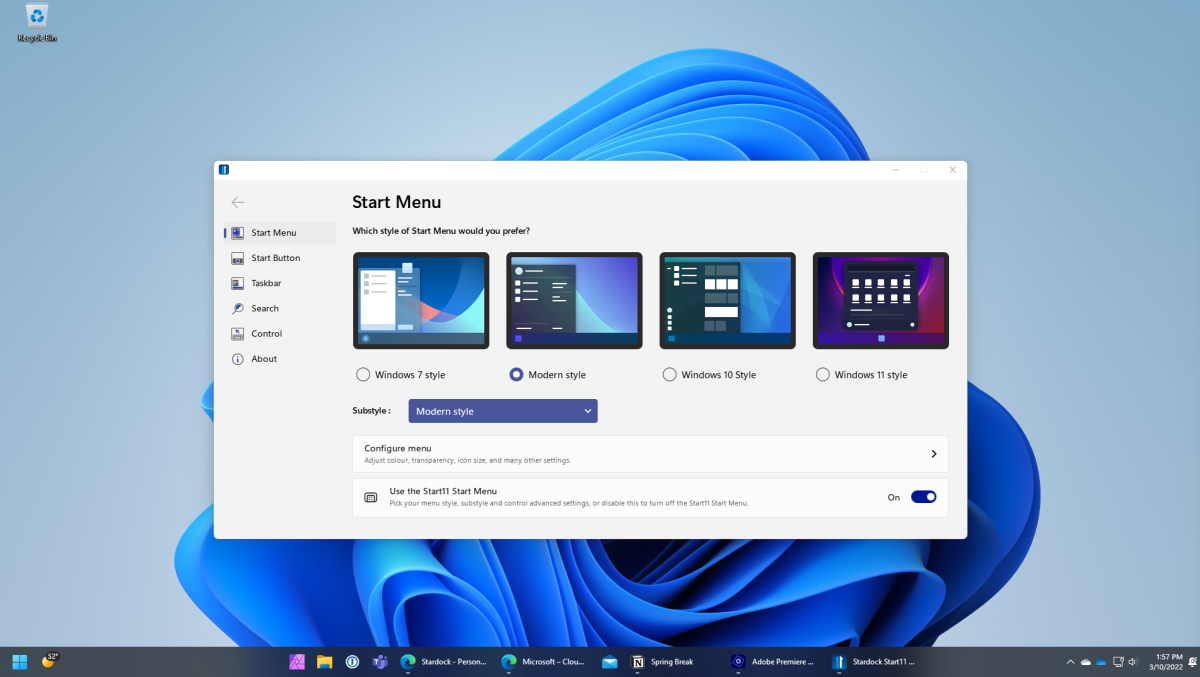Home windows 11 nearly ruined my laptop computer. These fixes (kind of) served
 [ad_1]
[ad_1]
Because upgrading to Home windows 11, my laptop just has not been the same.
While I realized from G3 Box News’s Windows 11 critique that Microsoft’s latest working program had a tough launch, curiosity got the improved of me, and I decided to upgrade my vacation laptop—a Lenovo Yoga C940 from 2019—for the sake of experimentation. I’m a sucker for visible redesigns, and I was keen to test some of Windows 11’s new characteristics, these types of as Android app assist.
The earlier several months have tested that this was not a great decision, and have strengthened my want to stick with Home windows 10 on the desktop Computer system that I use every day for operate.
Down below is an accounting of all the concerns I’ve operate into considering that upgrading to Windows 11, together with my attempts to deal with some of them. Whilst this might not depict everyone’s experience, it’s however a cautionary tale about upgrading your Personal computer just for the sake of it (primarily as Windows 10 is continues to acquire protection updates):
It drains battery though idle
My major irritation soon after updating to Home windows 11 was the way it burned as a result of battery lifetime when sleeping. Since I mainly perform on a desktop, my laptop can go unused for times on conclusion, so I’d have to preemptively demand it in advance of use to prevent becoming caught with a useless battery.
Why was this happening? By default, Windows 10 and Windows 11 use a mode termed Modern-day Standby, which keeps the pc connected to Wi-Fi in a small-electric power condition when you set it to snooze. This will allow Home windows to swiftly wake from standby and even down load updates even though the computer is idle.
However, Modern-day Standby can also be a battery vampire, and while I’d enabled it in Windows 10, in some way it arrived back with a vengeance in Windows 11.
I did discover a resolve, even though: Through this write-up on ElevenForum, building a modest registry edit lets you disable Contemporary Standby by means of the Home windows Manage panel:
- Open up an elevated command prompt and enter the subsequent: REG Include HKLMSYSTEMCurrentControlSetControlPowerPowerSettingsF15576E8-98B7-4186-B944-EAFA664402D9 /v Characteristics /t REG_DWORD /d 2 /f
- Stop by Regulate Panel > Ability Choices > Adjust Plan Settings > Change Advanced Ability Settings.
- Less than the “Balanced” profile, broaden the “Networking connectivity in Standby” selection and pick “Disable” whilst on battery.
Though I’m happy these modifications helped, no just one should really have to make registry edits just to stay away from idle battery drain.
Here’s a frustration you might know about previously: In Windows 11, Microsoft eliminated the potential to “never combine” taskbar objects, making it harder to multitask between quite a few cases of a one plan. Microsoft also obtained rid of Jumplists, which can exhibit fast steps or new data files when you suitable-simply click an icon in the taskbar or Get started Menu.
As encouraged by my colleague Mark Hachman, I mounted this difficulty by putting in Start out11, Stardock’s $6 utility that allows you restore the Start Menu and taskbar to its previous functionality.

Stardock
But Begin11 is not a excellent remedy both. Its look for function doesn’t normally recognize freshly put in packages, and once in a while I’ll run into a bug that necessitates rebooting the menu. Also, Commence11’s Jumplist for Typora, my creating application of choice, only demonstrates “Frequent” documents rather of “Recent” kinds. Start out11 is however a huge enhancement around Home windows 11’s default Begin Menu and taskbar, but it’s much less efficient for me than what Microsoft made available in Windows 10.
The electrical power button does not function proper
Windows 11 has also released a quirk to my Yoga C940’s energy button: When I press it, the LED indicator blinks for about 30 seconds, through which time it is difficult to flip the laptop computer back on. If I don’t want to hold out for the light to quit blinking, I must extended-press the button to pressure a shutdown, then reboot the notebook (which in all probability usually takes about 30 seconds in any case).

The C940’s side electric power button now stops me from quickly re-waking the computer from rest.
Jared Newman / Foundry
Switching the ability button’s actions from Hibernate to Snooze manner didn’t enable, and I’ve however to appear across any other methods. Stranger however, closing my laptop’s lid doesn’t lead to the identical actions.
For now, I’ve resigned myself to imagining two times right before hitting the electric power button. Although this is just a minor nuisance all round, it’s also a persistent reminder of the challenges Home windows 11 has caused.
Display contrast (quickly) acquired screwy
About a 12 months back, I wrote about how some Intel-driven laptops have a strange auto-distinction element that is meant to help you save electricity but just finishes up generating the display screen appear dirty. At the time, I was able to disable this attribute through Intel’s Graphics Command Heart application with no any evident hit to battery existence.
But about a month in the past, I found that my notebook experienced reverted to its aged contrast-correcting strategies, and Intel Graphics Command Heart no lengthier made available any way to correct it. The requisite location merely disappeared, and the constant shifts in distinction had been slowly and gradually driving me mad.

Jared Newman/IDG
Stranger nonetheless, the issue out of the blue settled alone final week right after a extended back-and-forth with an Intel spokesman, and I was capable to disable Graphics Command Center’s counterproductive makes an attempt at electrical power administration. Although I’m glad that my display is back again to regular, I have not gained an rationalization for what went mistaken in the very first put, and it helps make me speculate how numerous other gentle frustrations persons are tolerating with no clear route to resolution.
It just feels slower (sometimes)
This very last stage hard to put a finger on, enable on your own measure in any aim way, but my laptop has at times felt slower and significantly less responsive considering that upgrading to Home windows 11.
My Lenovo Yoga C940 has 10th-era Intel Core i7-1065G7 processor and 12GB of RAM, which should be much more than adequate for my common website browsing, emailing, and doc modifying. However at occasions, the laptop computer can appear lethargic upon bootup and sluggish to swap amongst apps or browser tabs. Even keyboard enter from time to time feels laggy.
To be honest, I’ve had plenty of stretches in which the notebook operates just fine—both on and off the charger—but that just helps make the occasional hiccup even far more vexing. I take really very good care of my computers, and investigating the normal suspects (these types of as startup and program tray programs) didn’t flip up any noticeable culprits. All over again, it’s tough to say if these concerns are even instantly linked to Windows 11.
But I provide it up for the reason that it matches into the all round pattern of matters not doing work like they utilised to, prompting me to shell out an inordinate total of time investigating why.
Most of the time, I’m enthusiastic about computer software updates. I was brief to adopt Windows 10 when it introduced in 2015, and I usually jump to the latest iOS or Android releases when they are out there (occasionally even in beta type). Even when difficulties with those updates come up, they have a tendency to get fixed rather rapidly, and I really don't regret acquiring made the soar.
Windows 11, for me, has been the unlucky exception.
Sign up for my Advisorator newsletter to get simple tech guidance in your inbox each Tuesday.
[ad_2] https://g3box.org/news/tech/home-windows-11-nearly-ruined-my-laptop-computer-these-fixes-kind-of-served/?feed_id=3002&_unique_id=62d69978186bd


0 comments:
Post a Comment